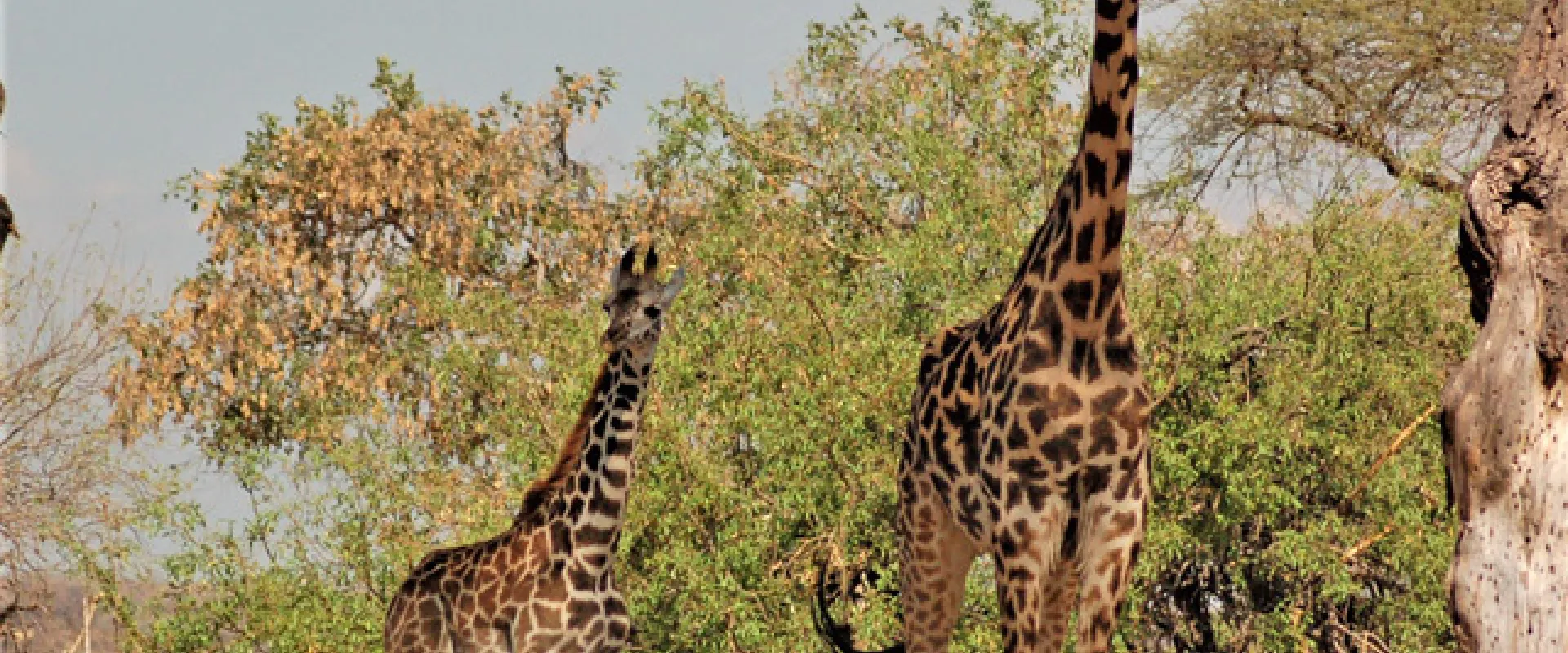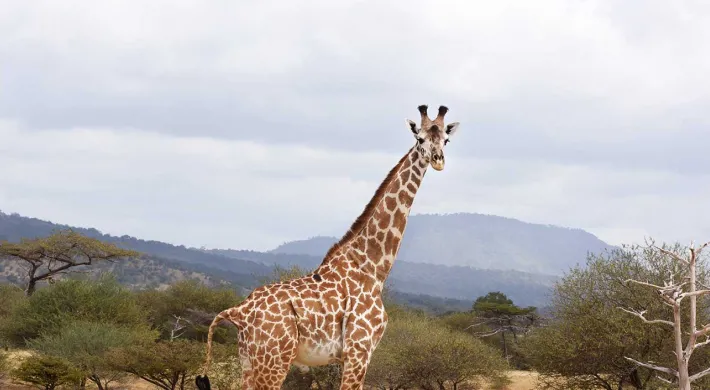Written by Jessica Manzak, North Carolina Zoo Tanzania Giraffe Research Program Coordinator
What is the first image that comes to mind when you think of a giraffe? Probably a long neck and lots of spots? Giraffes are iconic for their extra-long necks, but the spots are also exceedingly useful – not only for the giraffe themselves but also for researchers too!
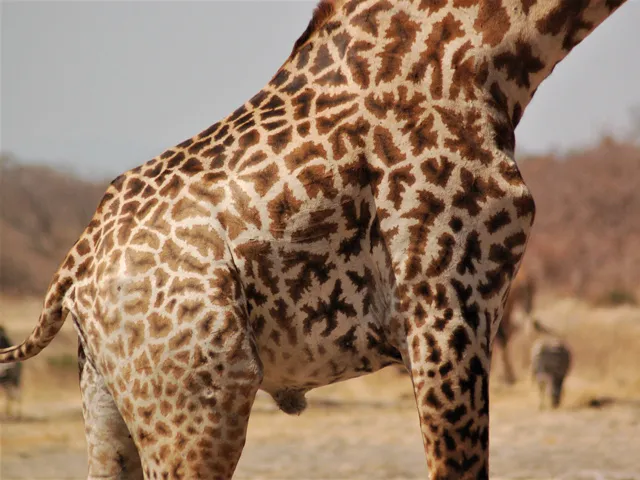
Close up of giraffe spots
What do spots do for giraffes?
Because giraffes live in places that are generally pretty hot, they need a good way to help cool themselves down. Spots are likely one of the methods they use to accomplish this. The skin underneath the spots has both extra-large sweat glands and a unique arrangement of blood vessels. These two features combine to allow them to lose heat more efficiently from the spots as part of their thermoregulatory system.
Another potential function of the spots is to improve the survival rate of the calves. In areas where there are high numbers of predators, particularly lions, calf survival is dependent on their ability to avoid or hide from those predators. It's been theorized the spots help the calves blend in with their surroundings when they are hiding in the dappled shade. There is a correlation with certain spot characteristics, such as size and shape, with the survival of young calves. However, it is unclear whether those characteristics actually cause increased survival or are simply associated with other traits that might be more important, like environmental or maternal factors.
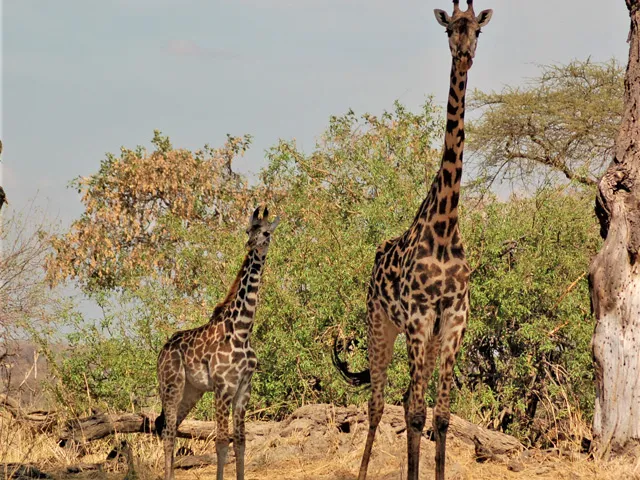
Mother and calf
Spot characteristics are passed from parents to their young. In a study of wild giraffes, the shape of the spot (how close to a perfect circle it is), and the edges of the spot (how curvy or smooth) were the characteristics most similar between mother and calf. This may help giraffe recognize individual giraffes and kinship, or familial, relationships between each other. Recognition of closely related individuals will help avoid inbreeding in a population.
What do spots do for researchers?
North Carolina Zoo is working with giraffe’s spot patterns to help advance our understanding of the threats facing giraffe in southern Tanzania. Each giraffe has a spot pattern that is as unique as a human’s fingerprints. With the development of software that recognizes those patterns from photographs, we can quickly identify an individual and know when and where we have seen them before.
There are several reasons this is important to conservation research.
One thing that makes using giraffe spot patterns challenging for researchers is that, just like human fingerprints, giraffe patterns are not symmetrical. This means the patterns from the right and left sides don’t match each other. When we take a photograph of the giraffe's right side, we can only match it to another sighting of the right side. For this reason, we must try to photograph both sides of every giraffe we see, so we can build our database to work from either side. It’s a lot of work, but eventually, this means we can take any photo of a giraffe, even ones that tourists might take, and know exactly where and when we’ve seen them before.
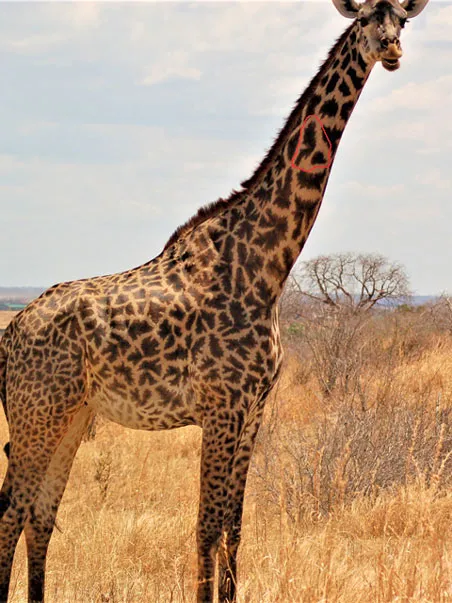
Spots on neck of giraffe circled (on the image) to help identify this giraffe
By referencing each sighting of an individual with a GPS point (an exact location), we can build a map of where they like to spend their time. This helps us determine what kinds of habitat they are most likely to use, and that can have big implications for management decisions. For example, if a national park is planning to add additional tourist facilities, they might use information about a species habitat use to decide where to put roads to increase sightings of that species, or where NOT to put lodges, which would destroy important habitat for wildlife.
We can also use information about how many times we’ve seen an individual to help determine population sizes. Using a technique called Photo-Mark-Recapture analysis, the proportion of “known” (they’ve been seen before) to “unknown” (this is the first sighting) individuals that are observed during a survey of an area can help estimate how big the total population of that area is. Of course, this is a simplified description of how this technique works, and an area needs to be surveyed multiple times before these estimates can be considered close to the actual population numbers.
In Ruaha National Park in southern Tanzania, most adult giraffes have a skin disease that affects their front legs. North Carolina Zoo is working to help understand the effects of this disease on the population. One of the big unknowns about this disease is how fast it progresses once an individual is infected. Previous research has been able to study the proportion of the population affected but hasn’t been able to make an assessment of how quickly the infection and lesions spread on one individual over time.
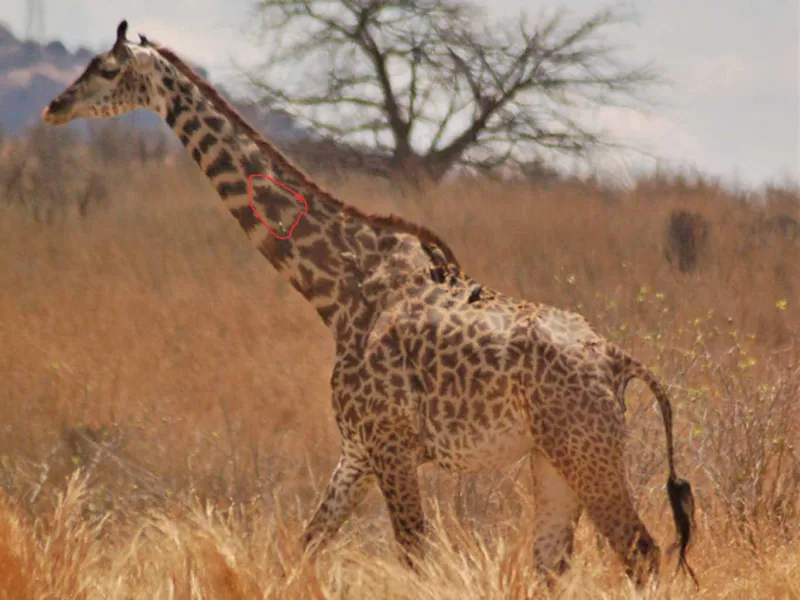
Spots on neck of giraffe circled (on the image) to help identify a different giraffe
By using spot identification, we can compare the severity of the lesions on the same giraffe at different points in time. Knowing how fast the disease progresses will be important in determining how much of a threat it is to the overall populations. In addition, in the future, if it is deemed necessary to treat this disease, being able to tell individuals apart will allow us to follow up and see if the treatments are successful or not.
